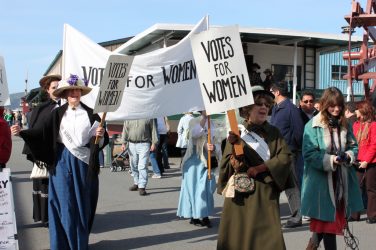What forms of contraception are young Europeans opting for and why? Caitlin Wilcox tackles the 21st-century contraception conundrum.
In the last year, slowly and quietly, there have been peeps and squeaks, trickles and ebbs, about certain developments in a field that still causes headaches and debates and tragedies across Europe and the world. You may have guessed it – or may not – but it’s the increasing likelihood of a new type of male contraceptive being developed. Contraception. That’s just as effective. And it acts on men. Praise be!
Is the future male?
Admittedly, one does have to caveat this with the fact that we are a little way off from seeing this rolled out under healthcare systems wholesale, but it’s certainly worth considering what this could mean for European youth. The three most promising avenues consists of the temptingly-named Vasalgel, developed by the Parsemus Foundation, who hope to have it in the clinical trial stage by 2016 according to their website; this is the injection that would block sperm from leaving the vas deferens (the tube that links testes to the outside world). Another is the development of the drug JQ1 that would inhibit the action of certain genes involved in spermatogenesis (the production of sperm cells), resulting in sperm not being produced; although this method would take about six weeks to kick in. The drug Eppin would target the physiological process by which sperm gain mobility, leaving them unable to make that arduous journey to the egg.
One of the most important shifts that male-effective contraception of this kind could herald is a reconceptualising of contraception as a women’s issue, and on top of that a women’s rights issue, into one in which gender becomes a less influential factor. This is not to undermine the importance, historically and contemporarily, of contraception in continuing debate and policy towards improving gender equality, but it certainly would be a welcome new angle with which we can consider why and how contraception becomes a part of constructing gender identity. As the paper regarding JQ1 states, “This lack of contraceptive alternatives for men is partially responsible for the high rate of unplanned pregnancies, especially in teenagers, and contributes to the maternal mortality, ethical, social, and financial costs associated with abortions and deliveries to single mothers.” It is buoying that this is the reasoning behind such endeavours, and more autonomy for men can serve to strengthen understanding and responsibility when it comes to controlling sexuality and, ultimately, your own body. In terms of effective contraceptive choices, men at present have the option of two (I don’t think I can condone calling withdrawal method an effective form of preventing pregnancy) – condoms, or vasectomy – both of which come with distinct drawbacks.
Contraception contemporarily
Luckily, half of these options are also an effective protection against STIs. According to the NHS website, out of the 15 options available to women, of varyingly appetising nature – diaphragm? cap? spermicide? – only one, the female condom, offers an effective defence against STIs, whilst the diaphragm and the cap offer a limited protection. There is a degree of logistics here – physical barriers are the best prevention of transmitting infections – but it does highlight how the prevalent thinking when considering the development of female contraception comes to preventing pregnancy.
These developments and their potential warrant highlighting the state of contraception in Europe presently, in terms of availability and use. Contraception use across Europe varies broadly across nations and geographies, but statistics and research are pretty slim. In the last year, the European branch of the IPPF (International Planned Parenthood Federation) released its “Barometer”, a report detailing the results of a survey undertaken across 16 European countries, and concluding that many EU countries are failing to provide access and education concerning contraception to their populations. Within the framework of sexual and reproductive health and rights, this is the most far-reaching study in terms of evaluating policy and initiatives regarding contraception. Out of the 16 surveyed, three had current government-funded awareness campaigns regarding reproductive rights and choices, including fertility and contraception, whilst nine had a compulsory form of “sexuality” education, but that this was often found to be lacking.
This attitude is not one confined to Eastern Europe; in Italy also, contraception is not an open discussion. A friend who grew up in Italy concurred, “I think there’s often a sense of shame that ties into the inherent Catholic values that have historically shaped attitudes in Italy today towards contraception and sex… Contraception is frowned upon.” Implementing policies and strategies to improve access and awareness of methods of contraception, or encouraging individual autonomy and healthy attitudes towards sex come in direct opposition to religious and cultural values. Yet for the youth of Europe, an increasing openness about sex via media and the internet demands an equally open and informed discourse, supporting healthcare structures that provide inclusive and appropriate access to modern methods of contraception; through that, promoting a culture of healthy attitudes towards sexuality.

Such values can also feed into economic barriers to contraception. Whilst male contraceptives certainly undermine gender-specific barriers to contraception access and education, there are still obstacles to be faced of this kind. When put to my Romanian friend, she immediately asked about cost; something that I – growing up in the UK and with contraception freely available on the NHS – had ignorantly not considered. Obtaining contraception in Romania is available on prescription, but most people would consider it too taboo to discuss with a doctor, meaning that people will either pay for the cheapest, but not necessarily most appropriate, contraceptive; many rely on the withdrawal method. In Italy, too, abortions and the morning after pill are expensive, along with condoms and other contraceptive methods.
In my own experience, growing up in the UK, contraception is something I have had classes on in school, as well as it being readily available free of charge, something which I have generally taken for granted. Indeed, Northern Europe historically has more relaxed legislation regarding contraception and abortion; as a friend described her schooling in Germany, “In Year 5 [age 9-10] we were putting condoms on cucumbers, and there is a very open discourse on sex, in true Northern European fashion.” Yet contraception still comes with a gender bias. IT is something I have always felt personally responsible for; a double-edged sword, because although I am totally in control of my choices, I would still be expected to have chosen an option in the first place, whereas my partner could take a much more hands-off approach. Issues with contraception, particularly hormonal, can be construed as “women’s problems”, verging on the dismissal and invalidation of emotional side-effects; this probably also ties into the impression of a menstruating woman as hysterical and irrational. This is probably one of the main reasons I am so jubilant at the idea of male contraception, because there is an experience-gap between men and women when it comes to altering your hormone balances that is incredibly difficult to convey. I recently changed to a non-hormonal method of contraception precisely because being on the pill made me feel so erratic, but that decision is not one that I expect a huge amount of understanding for from anyone who has not been on the pill, or, perhaps more relevantly, from someone who has not had to consider contraception at any time other than in the moment.
The future?
Contraception remains a hugely important factor in European culture, and remains hugely varied within it. Considering some of the examples above is not to encourage a caricature of cultures across the geographies and nations of Europe, but to highlight how difficult it is to generate a ‘European’ culture when it comes to sexuality. Moreover, one can question whether a homogenous culture in this sense is even desirable; Europe can and should celebrate its historical and contemporary diversity. That said, we still face very real instances of human rights being violated through a lack of education and awareness, but these solutions must consider the plurality of ‘European’ culture. The complexity of the situation is something that tempers the revolutionary appeal of a male contraceptive. Yet the hope for it remains in that it can provide a level playing field for men and women, both in responsibility and autonomy. Ultimately, however, this relies on a broader initiative to provide appropriate, applicable, education to all genders.
Photo: Cory Doctorow (Flickr); Licence: CC BY-SA 2.0






